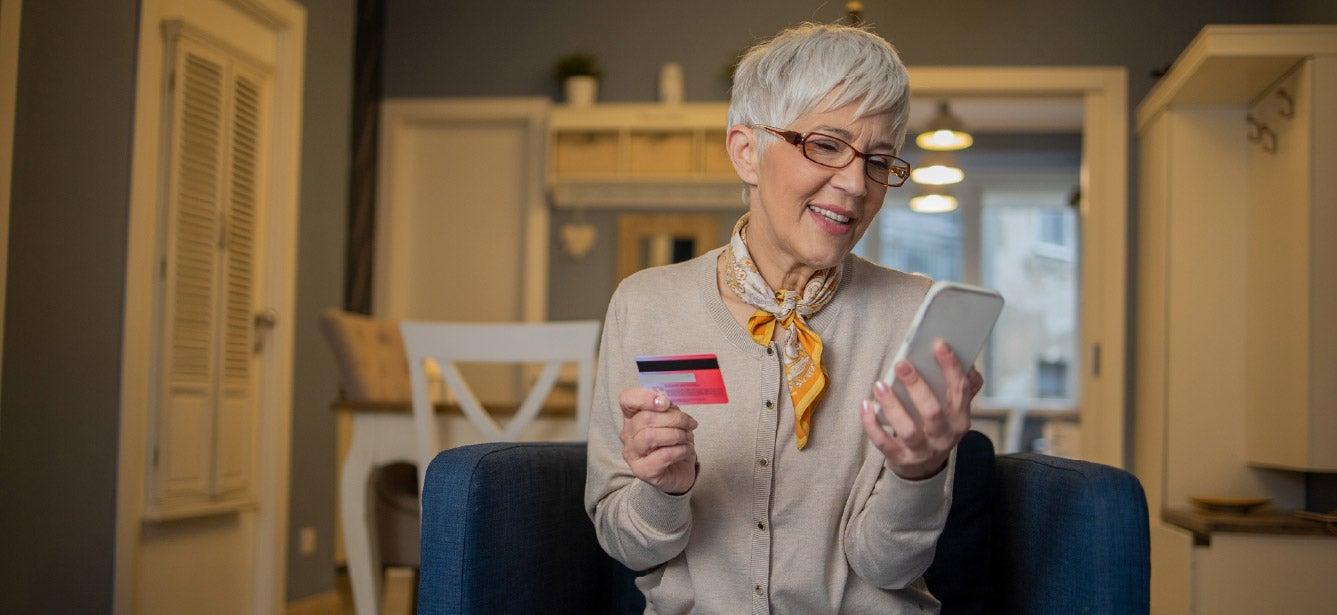
Related Topics
Increasingly, technology innovations for aging and accessibility provide amazing opportunities for older adults to live better in and around their homes. This year's Consumer Electronics Show (CES) showcased tech innovations that revealed the direction innovations for aging and accessibility are headed. Like at CES 2023, the advances on display were all amazing!
How AI is driving technological advances
The theme for CES 2024 was "AI for All," and it is the driver for devices everywhere, for everyone, and all at once! AI (artificial intelligence) is the underlying current that has charged tech for years, and it was present in so many great new innovations demonstrated at CES 2024.
What many might not realize is that AI has been around for quite some time, built in to the many devices older adults rely on to enhance and manage daily life, such as:
- Aiding voice assistance devices to provide personalized responses and updates
- Implementing tech for smart cars and smart homes
- Supporting telehealth and medical applications
AI has and will continue to be an important component of the technology that benefits older adults.
With AI as the engine, exciting innovations were on display at CES, and all these new technologies offer older adults a pathway to aging well in 2024 and beyond. Here are some unique innovations that are leading the way for aging.
How tech could improve health care and medical services
Non-traditional hearing devices
Hearing loss will impact a significant number of us at some point during our lifetime. CES has an extraordinary number of technology devices dedicated to help with mild to significant hearing loss, with innovation in hearing aids and hearing assistive devices with a wide array of over-the-counter hearing devices.
One trend: imbedding hearing assistive devices within eyewear. There are more eyeglasses on the market, or in development, that serve both as prescription eyewear and as a hearing device for mild to moderate hearing loss.

Nuance Audio offers eyewear that assists those with mild to moderate hearing loss with innovative technology that is built-in to a pair of smart glasses. The Nuance Audio glasses have a mic in the front of the frames to identify and target the person you’re talking to—rather than amplify all the sound of the entire room—and then provide an open ear speaker in the arm of the glasses for the wearer to hear the conversations. It also reduces the sound of your own voice. The glasses will be available later in 2024, and customers will eventually be able to include their own prescription lenses in the Nuance Audio glasses.
Digital Twin(ning)
Several companies innovative digital twin technology was on display at CES, offering a new, breakthrough tool in health tech that could improve surgical procedures and medical testing, and develop personal health strategies to improve medical treatments.
The Digital Twin technology on display at CES 2024 from Dassault Systemes offers innovative digital technology in health and medical services that can create digital “twins” of the human body, and individual body organs, thus allowing a more exact means for medical research and testing. Digital twinning, for example, can provide the opportunity for medical testing of a new drug on a human organ without any risk to an individual—or animal. Digital Twinning can also offer a roadmap to potential new breakthroughs in disease treatment, without the risk created by experimental drugs.
Enhancing assisted living
Alexa, one of the voice assistance devices in so many homes today, is now also a key component in many senior care environments. With Alexa Smart Properties, the Alexa and other Amazon devices have been integrated within assisted living communities and installed in each of the resident’s rooms to provide daily information such as meal options, activities, and other services.
The Amazon devices also offer two-way audio and visual communications for residents to allow them to communicate with in-house residential care staff and other residents, as well as their own family and friends. The voice assistant device helps residents get information about the center’s activities, plan and select dining/menu options, and stay informed about daily news and important current events.
The “Great American Elderverse” is a partnership of MyndVR, HTC, and AT&T, to provide virtual reality (VR) headsets to senior living centers. The HTC headsets are light and comfortable to wear. MyndVR offers virtual reality content tailored for older adults that transports the user virtually to cities around the world, to fly through the air, or to sit in a field and relax with puppies. AT&T provides the 5G high-speed connectivity necessary for the VR technology to work.
Aging well in the home
Currently available with the Apple Watch, the amazing neural input technology integrated within the Murad Band (which replaces a regular Apple watch band) allows the wearer to use subtle finger and hand movements to then control several different devices. For example, the wearer can turn on and off a lamp, control an iPad, a computer, and other devices, by turning his or her hand or making certain simple finger movements. This could be a game-changer for those with severe arthritis and other mobility issues.
The DreamFace Robot, more familiarly known by the name “Ryan,” is designed to provide social interactions with older adults, to reduce the workload of caregivers. Ryan can engage in conversation, play games, and assist individuals with physical exercise support. Daily interactions with Ryan can help with enhanced memory and cognitive support and is another possible “tool” for future planning for aging in the home.

With the Nobi lighting systems, fall prevention and detection technology is offered in several different styles of overhead room lights. The lights can be integrated into an age in place environment, enabling older adults to continue to live at home and their loved ones or caregivers to stay informed. The AI-enabled technology will automatically adjust lighting if there is movement in the room, so there is a clear path during the night. Nobi also offers monitors movement, and staff is alerted so they can check on a resident day or night. If there is a fall, help is sent quickly. Nobi lighting offers: optical sensors that help adjust lighting based on movement, two-way communications to chat with a resident if a fall is detected, and fast response action.
The future of accessible and innovative technology
AI was at the forefront of CES 2024, driving the devices we use today as well as those in development to potentially reach the market in the coming years. While it was all about AI, the other important technologies that will benefit older adults are VR (Virtual Reality), AR (Augmented Reality) and Haptic technology.
Haptic technology has been embedded in our devices for some time. For example, it’s the vibrations we can feel with a smartphone or smartwatch. Now, haptic technology is finding its way as a helpful tool for accessibility.
The start-up, OneCourt, is working to help sports fans with blindness or low vision to enjoy being a game-day spectator. They’ve designed a haptic device that conveys hard-to-describe details to the user through spatial vibrations as well as audio, providing a more realistic “watch” experience with sporting events. For example, someone can “feel” what is happening on the football field, as well as simultaneously hear the plays as they are announced.

With millions of Americans entering their older adulthood every year, innovators are at the forefront of developing tech devices for universal use that are also more accessible to enhance our daily life and help all of us age well.
Top photo courtesy Consumer Technology Association. Article photos courtesy Debra Berlyn.



